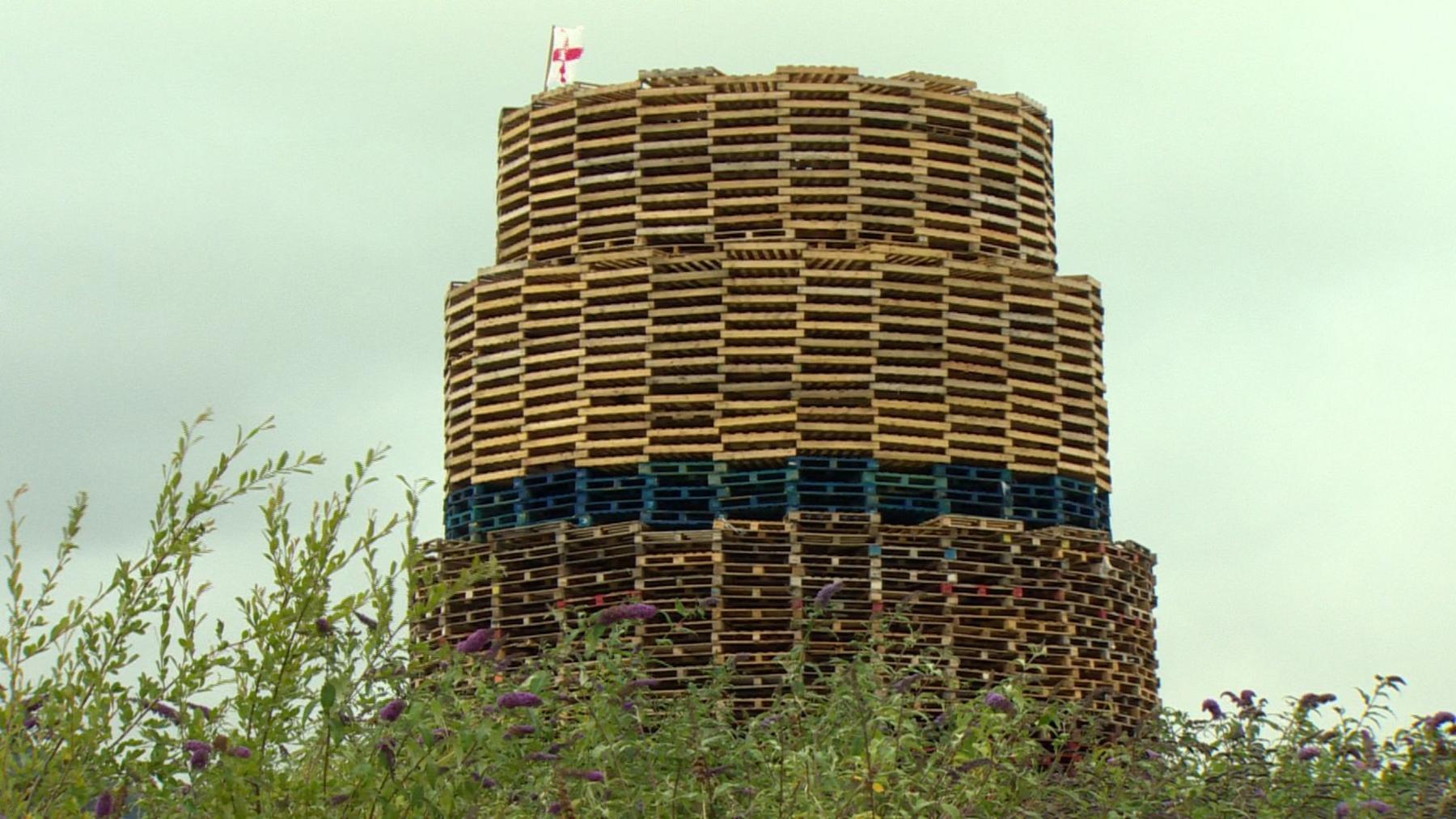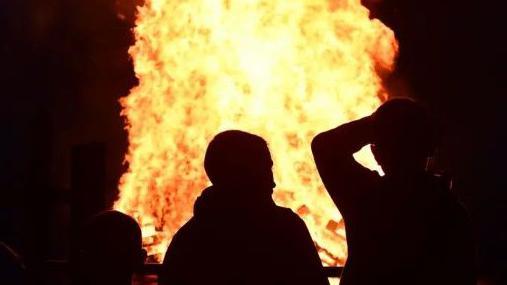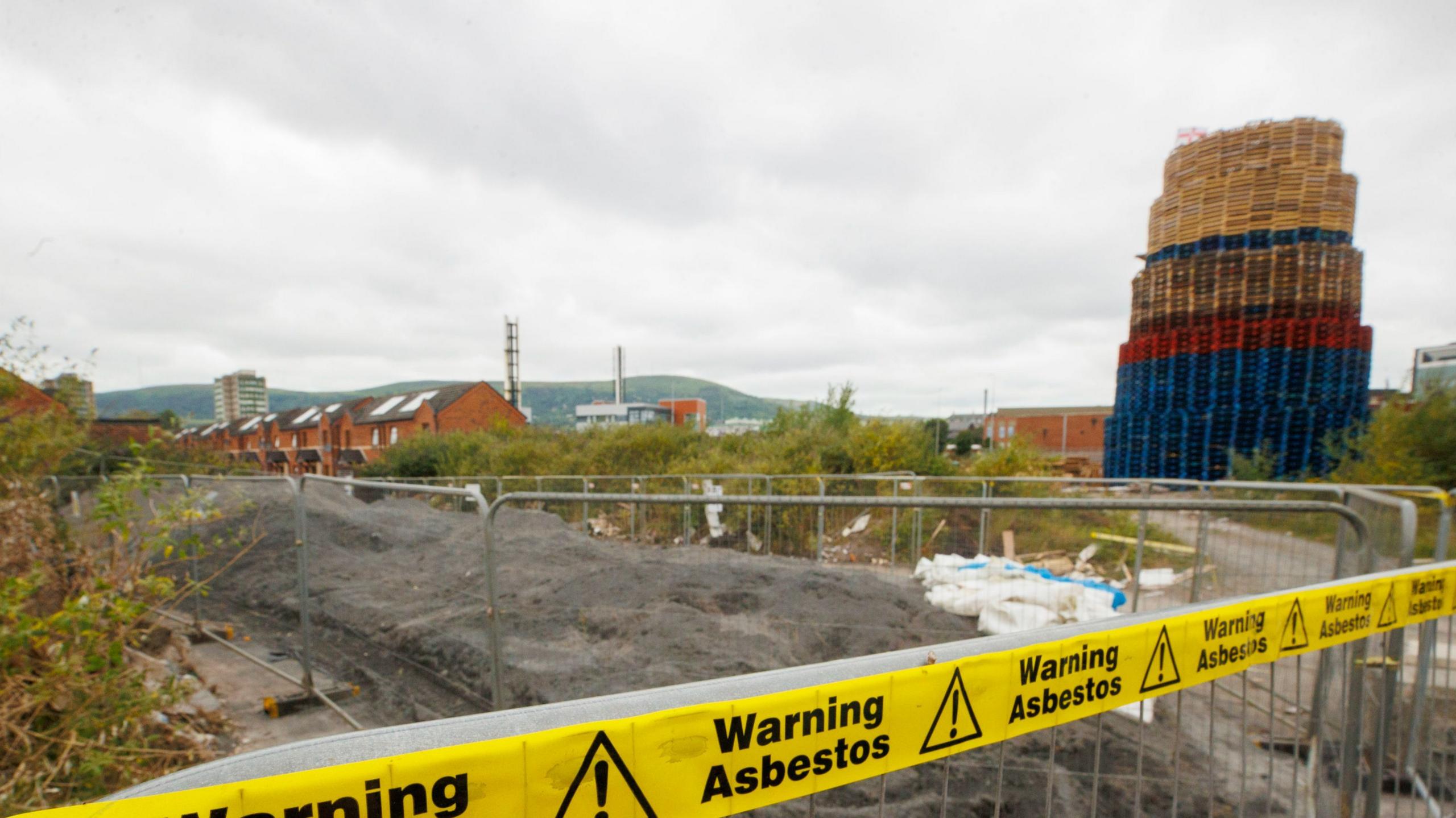More asbestos fragments found near south Belfast bonfire
Drone footage shows the proximity of the bonfire to infrastructure.
- Published
More suspected asbestos has been found at five locations around a bonfire site in south Belfast.
The Northern Ireland Environment Agency removed about 20kg of material from the site, between the Donegall Road and the Westlink.
Concerns had been raised about the presence of a pile of asbestos at the site as well as separate concerns that the power supply to Belfast City and the Royal Victoria Hospitals would be put at risk because the bonfire lies near an electricity substation.
Earlier police confirmed they would not assist in the removal of the bonfire, which is due to be lit on Friday as part of annual Twelfth events.
The council had asked the PSNI to assist contractors to dismantle the bonfire before it was lit.
But on Thursday police said they would not do so.
The PSNI said that, after a multi-agency meeting, it was felt "the risk of the bonfire proceeding as planned was lower and more manageable than the intervention of contractors and the proposed methodology of dismantling it".
Belfast City Council acknowledged the PSNI's position but remained concerned about the presence of asbestos on the site and has continued to raise these concerns with the Northern Ireland Environment Agency (NIEA) and has asked the agency for assurances when it comes to public health.
The council voted to write to the environment minister to act immediately to have the asbestos removed.
The NIEA said it was first alerted to the issues around the bonfire on 16 May, but "circumstances did not allow for the safe and controlled removal of the asbestos", prior to the Eleventh, so the agency worked with the landowner and council to agree mitigating measures to reduce the risk to public health.
Mitigations included the further covering of the asbestos containing material, the use of fire-retardant material and the erection of additional fencing.
The NIEA said it was their understanding that the landowner will arrange the removal of all of the asbestos from the site next week.
They also said there was a strong possibility that fragments of asbestos could be elsewhere on the site.
Bonfires are lit as part of Eleventh night celebrations in some unionist areas of Northern Ireland, to usher in the Twelfth of July, the main date in the parading season.
The Twelfth commemorates the Battle of the Boyne in 1690 when the Protestant King William III - also known as King Billy and William of Orange - defeated Catholic King James II.
'Olive branch'
Earlier, bonfire builders voluntarily removed tiers of pallets from the top of the bonfire and told BBC News NI the action was an "olive branch" to those concerned.
People voluntarily remove pallets from Broadway bonfire
The police statement said that there had been an "evidence-based assessment" which had take all of the risks associated with the removal into consideration and they would continue to work with partners to "manage the remaining risks surrounding this bonfire".
SDLP councillor Donal Lyons said he was "deeply disappointed" by the PSNI's decision.
He told BBC Radio Ulster's Evening Extra programme that the "hazards" of not intervening were the issues of the remaining asbestos on the site and further risks to public safety.
"I think the police need to articulate what their risk assessment is, they haven't done that. But more widely this is a political failure, we've known about these issues for months," he said.
"I'm not particularly pleased about how the council has handled it either but this is spread across a number of departments, and every summer we are arriving in this groundhog situation with two or three particularly contentious bonfires."
But DUP councillor Sarah Bunting described the decision as "common sense".
She told the programme the community could "rest assured their bonfire is not going to be removed".
"It's a pity we had to get to this point, but I think it is to be welcomed. We need to continue to work with the community and show that their culture is celebrated," she added.
TUV deputy leader Councillor Ron McDowell said it was a "welcome and unsurprising" decision but criticised the council's response as a "shambles".
Alliance councillor Emmet McDonough-Brown said the council's primary concern was ensuring the safety of people and critical infrastructure, "including those building the bonfire".
"We'd encourage people to show leadership voluntarily and take every possible step to mitigate any and all potential risks," he added.
'Frustration'
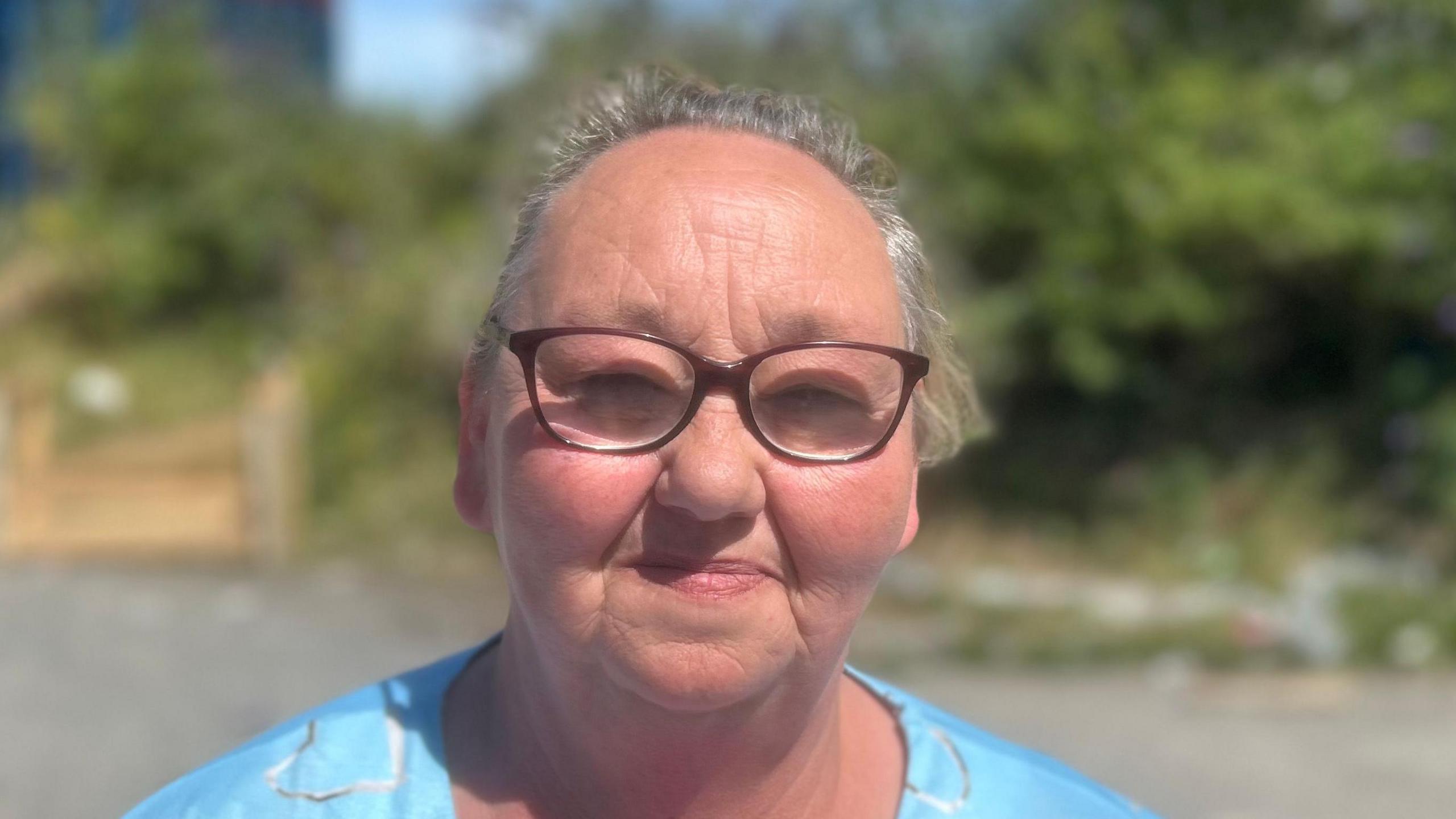
Carol Walsh says the bonfire means everything to the community
Residents of the Village area of Belfast, where the bonfire is situated, said the bonfire means "everything".
"This bonfire has been going for all of our generations… and we want our next generations to know our culture. This isn't to get up anybody's nose.
"The children of this area have been collecting for the bonfire since Christmas time."
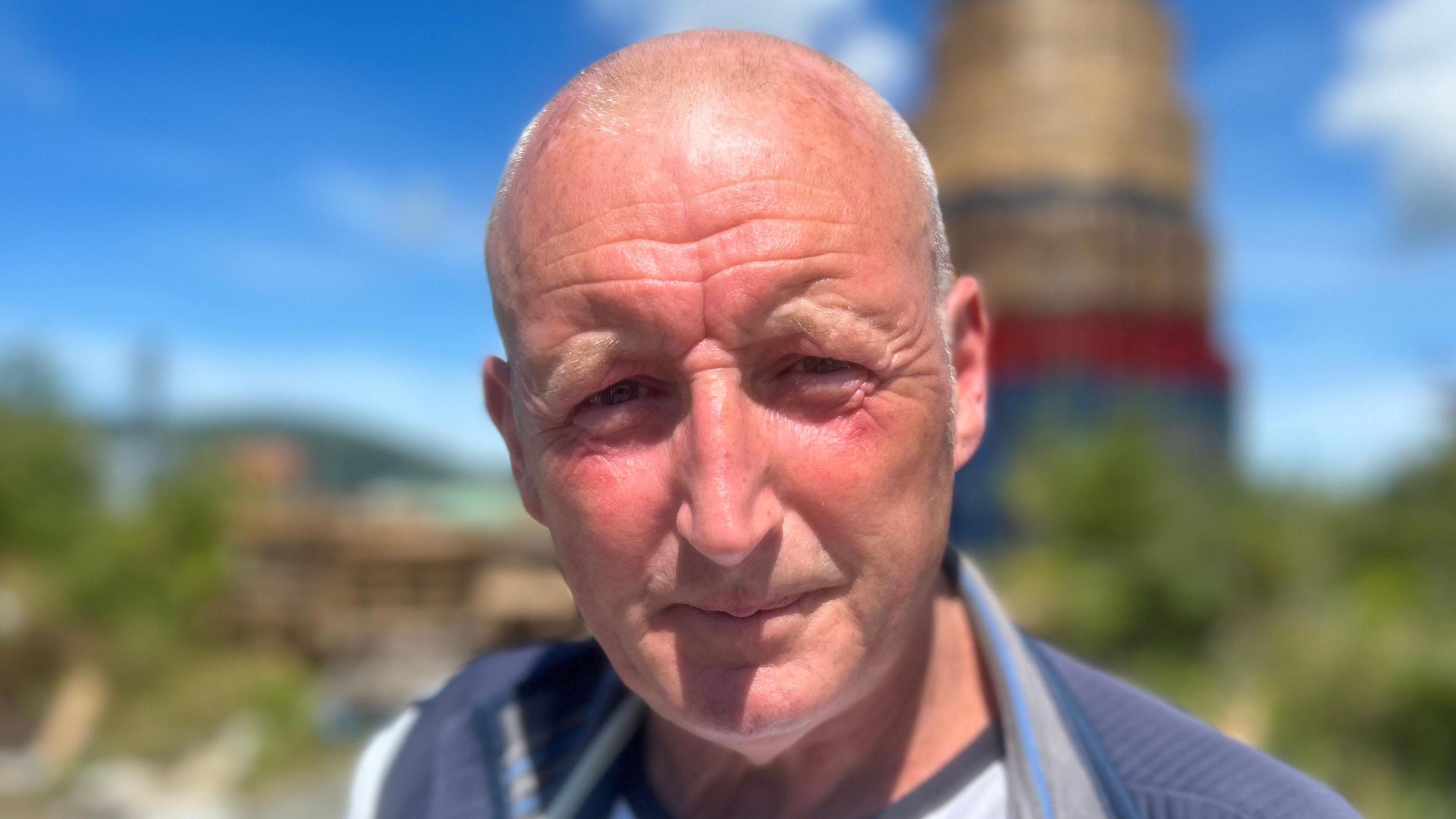
Billy says this is another attack on their culture
Billy Garrett, another resident, said there was "a lot of frustration".
"It's just another attack on our culture and our traditions. We don't see any harm in what we're doing here, especially in the Village area of south Belfast. It's just knocking the heart out of everyone," he told BBC News NI.
He said the organisers of the bonfire site had been making sure it was safe since September last year.
"They've went through all the proper people to make sure it is safe for everyone in the community."
'Other mitigations'
Speaking earlier before the police decision, the Deputy First Minister and DUP MLA, Emma Little-Pengelly, said: "No one wants anyone to be hurt or for there to be any risks to health or wellbeing".
On Facebook , externalshe said those involved in the bonfire had engaged for "some time" on "size and other mitigations" and she believed that would continue.
On Wednesday First Minister Michelle O'Neill said it was "entirely wrong, and completely unacceptable for these bonfires to take place in a way that endangers property, infrastructure, public services or lives".
Earlier, Sinn Féin MLA Pat Sheehan told BBC's Good Morning Ulster programme that the police had a "responsibility" in the situation.
He said the issue had only been brought into the public domain because it is "the first time a bonfire has been held in this site".
Sheehan had also urged unionist politicians to "show leadership".
The Environment Minister Andrew Muir has urged the public to "exercise caution and common sense".
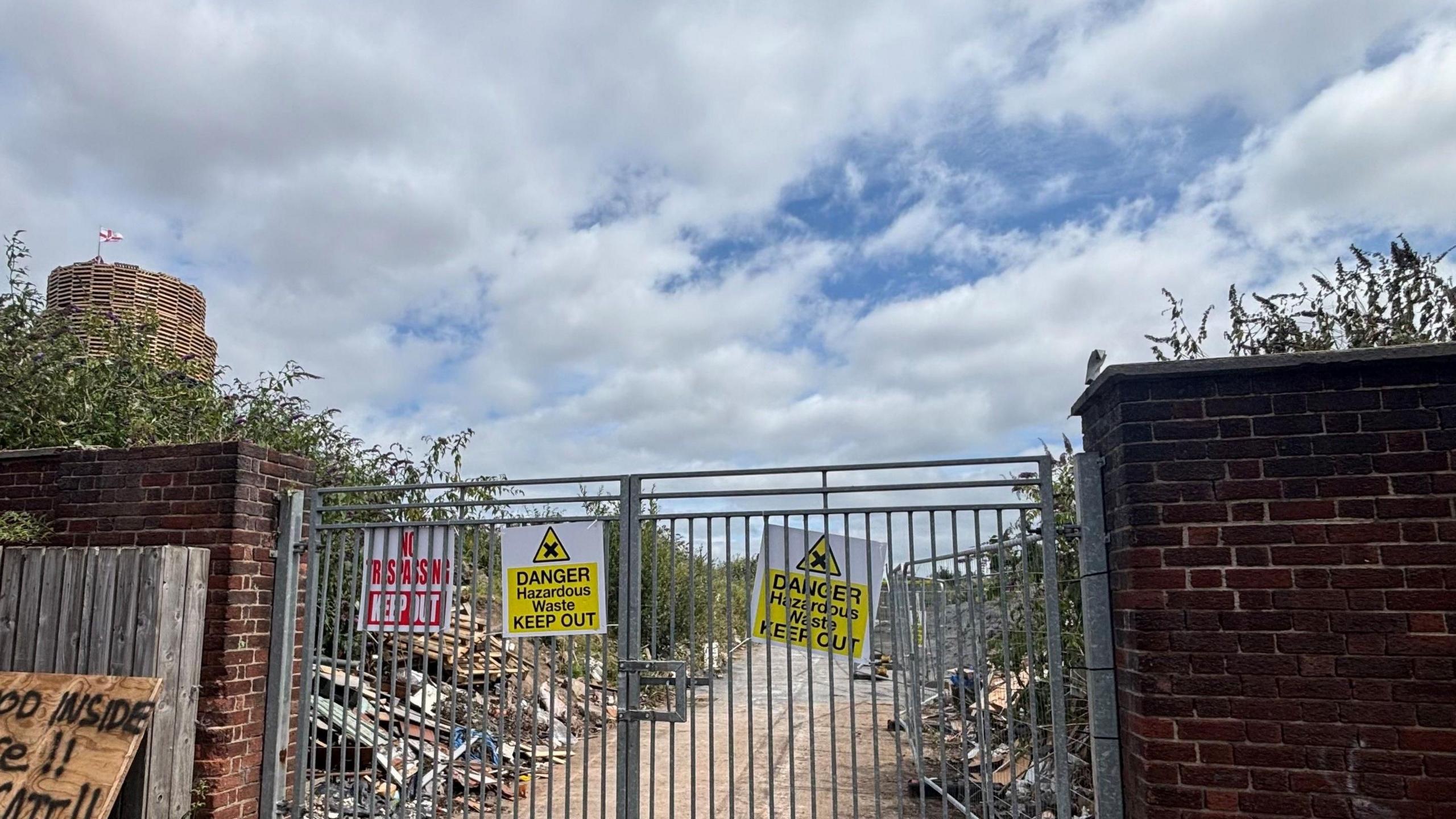
In a statement, the council said it previously took enforcement action and secured the site due to asbestos in 2011
Loyalist activist Jamie Bryson planned to take legal action to stop the bonfire being dismantled and has questioned the decision-making process behind the vote.
However, the council rejected claims that the decision to dismantle the bonfire breached legal guidelines and said the move was part of its "emergency" decision-making processes.
It also said it was in line with the rules of council, those cases on which an "inability to immediately implement a decision would result in a breach of statutory or contractual duty".
Power for hospitals
Belfast Health Trust said the bonfire was near a substation that supplies both hospitals.
Northern Ireland Electricity (NIE) said it had expressed concerns over the bonfire's "proximity to the substation causing potential risk to critical infrastructure and power outages".
The trust said it had contingency measures including back-up generators and it was confident there was no need to cancel any planned treatments or procedures.
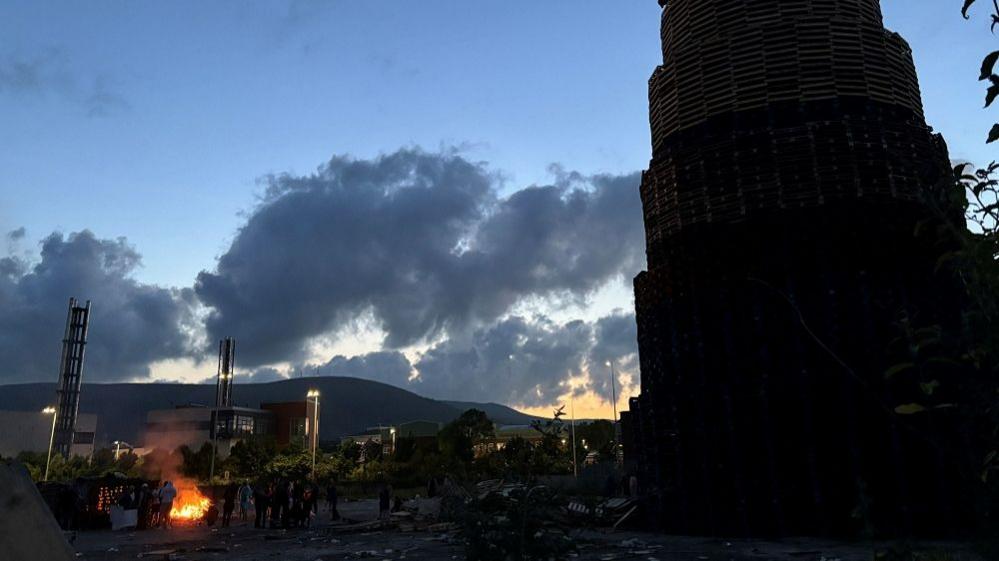
People gathered at the south Belfast bonfire on Wednesday night
Who owns the site?
The landowners, Boron Developments, bought the site in the summer of 2017 and were made aware of asbestos at that time.
Boron Developments have said it engaged a waste management company to remove the asbestos but the company needed "no personnel" on the site in order to complete the removal of asbestos.
Due to people "bringing in materials and building the bonfire" the company told the landowners it could not complete its work.
The council said while the lands at the site remained "the responsibility of the landowner" the council and the Northern Ireland Environment Agency (NIEA) were "working together in relation to this site".
- Published8 July
